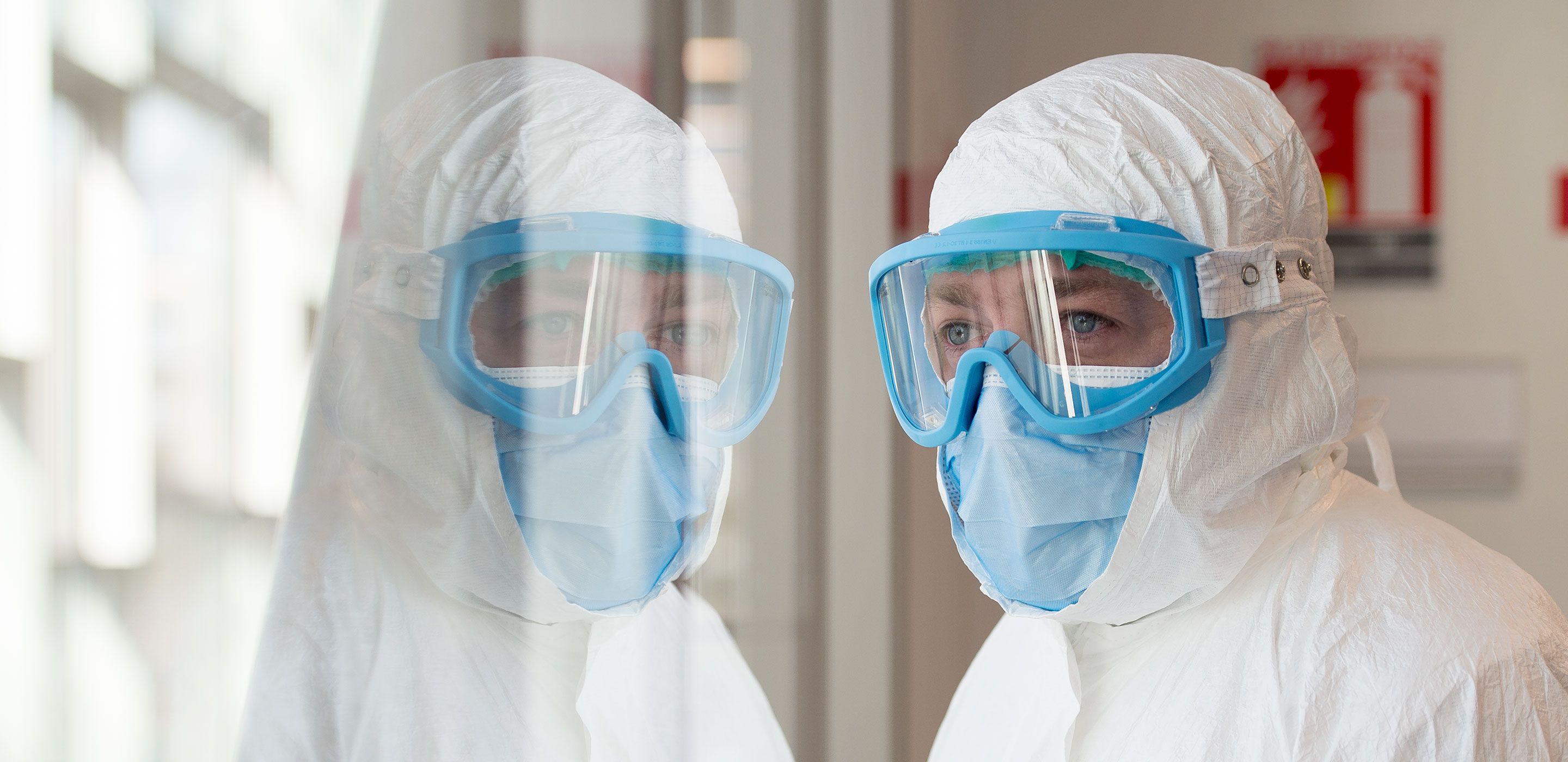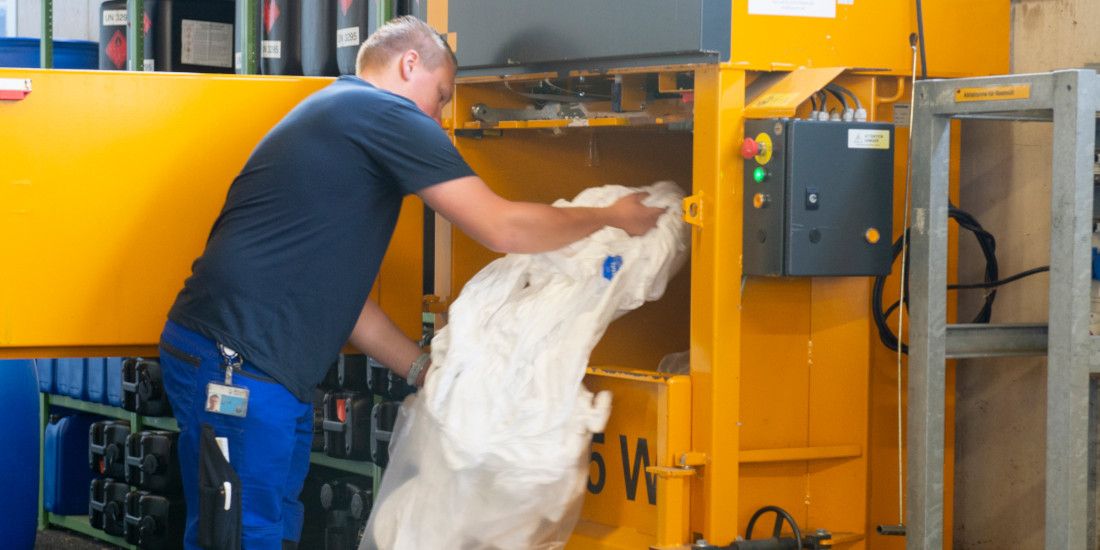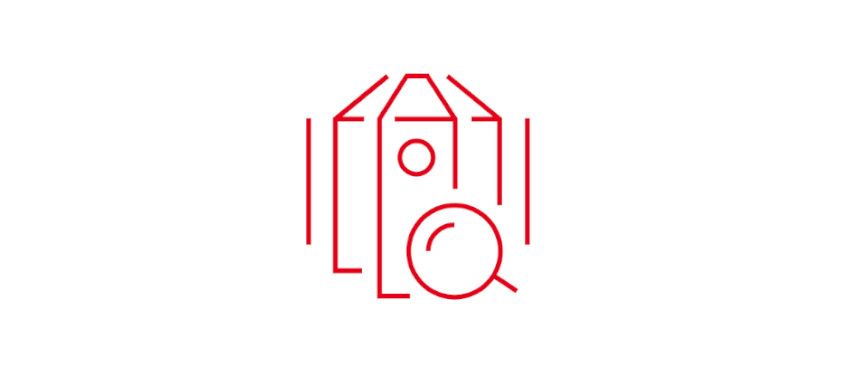-
Challenges and risks: download the e-guide
-
Applications
-
Product solutions
-
Case Studies
-
Resources
Challenges & Risks
From R&D laboratories to final product manufacturing, the pharmaceutical and biotech industries consist of very complex processes that include handling chemical and biological substances. HSE managers and Quality Assurance managers must select apparel to protect their workers, processes and final manufactured products.
E-Guide to Protective Garments for Pharmaceutical Applications for HSE
New technologies, novel diseases, and innovative medical treatments are transforming the pharmaceutical industry.
Now more than ever, pharmaceutical and CDMOs companies must protect their workers against multiple chemical and biological hazards while maintaining the highest levels of cleanliness. Personal Protective Equipment (PPE) is critical to protecting workers while preventing contamination.
This e-guide looks at the key factors Health & Safety Engineer (HSE) managers in the pharmaceutical industry should consider when selecting protective garments for their workers.
It also analyzes each application, the main risks to workers, the potential for contamination, and how the latest garment solutions can help address them.
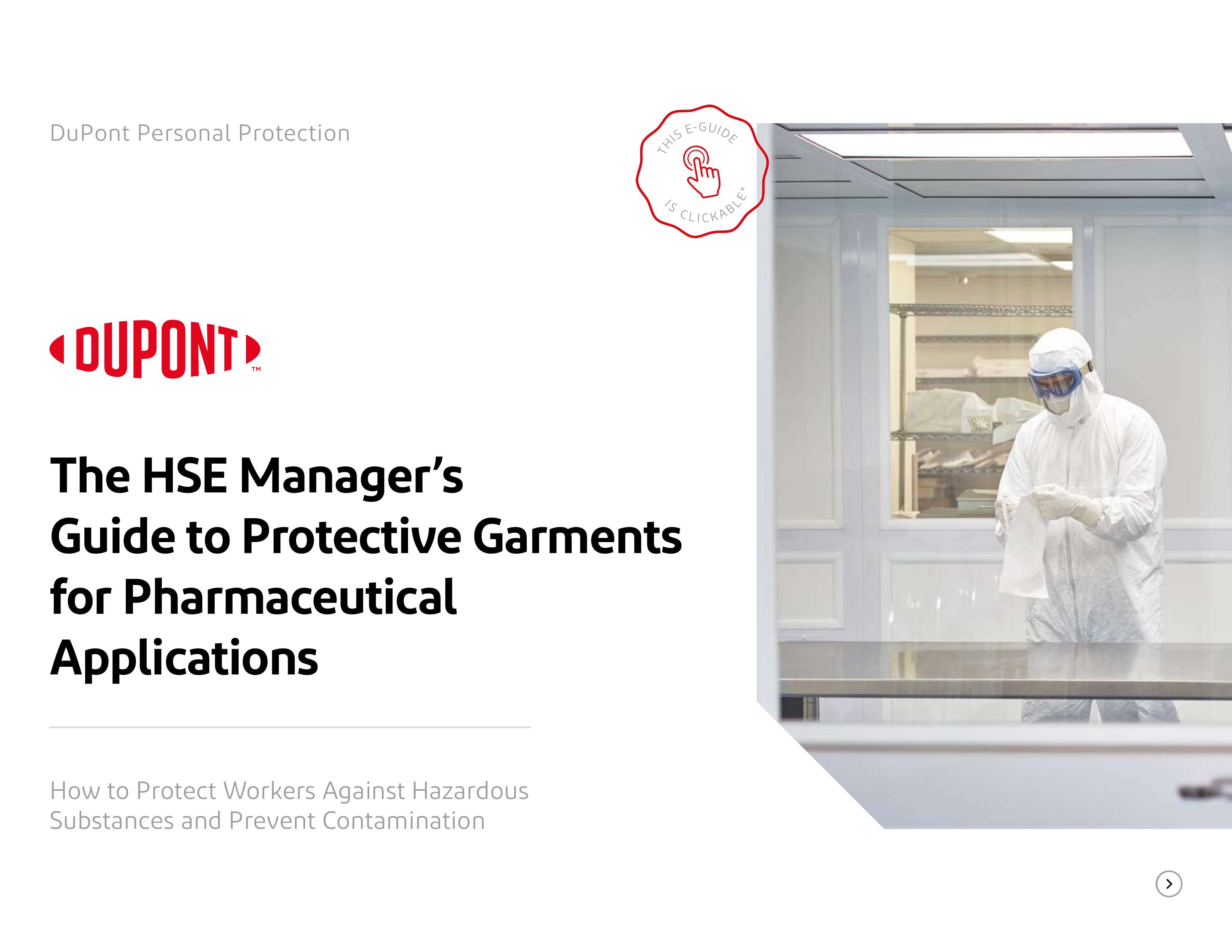
Applications
In the pharmaceutical industry, HSE management has three fundamental objectives:
1. Keeping workers safe from hazardous substances
2. Preventing the accidental contamination of pharmaceutical products and processes
3. Constantly checking and re-evaluating work procedures to take into consideration changes to production processes, reclassifications of hazardous substances and new regulations
DuPont is more focused than ever on providing innovative protection solutions and expert technical support, tailored to meet the specific needs of those working in the pharmaceutical industry around the world.
The below graphic will help you to see where DuPont Personal Protection solutions can be used in pharmaceutical and biotechnology manufacturing:
API manufacturing
Biologic & biotherapeutic manufacturing
Facilities & maintenance
Final drug manufacturing
Laboratories
Product Solutions
Protecting operators, processes and products with DuPont Personal Protection
The DuPont Personal Protection portfolio offers a full spectrum of cleanroom and PPE garments and accessories for greater safety, comfort and protection against contamination.
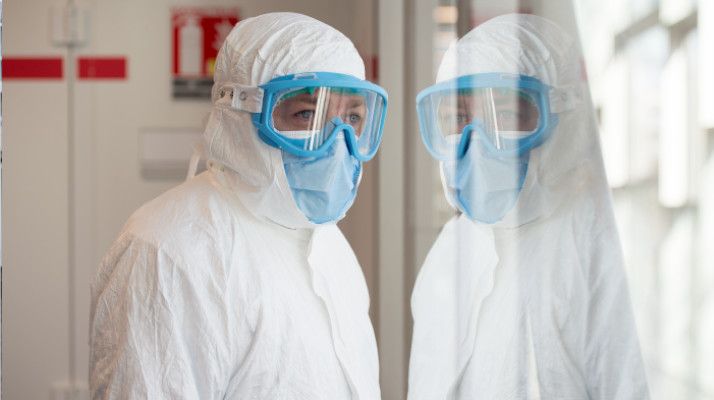
Sterile and non-sterile garments and accessories for GMP A/B/C/D and ISO 4/5 controlled environments
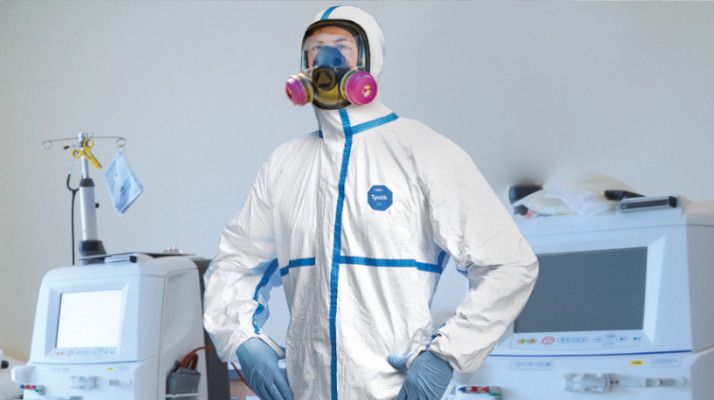
Non-Sterile garments for GMP C&D and ISO 6/9 controlled environments
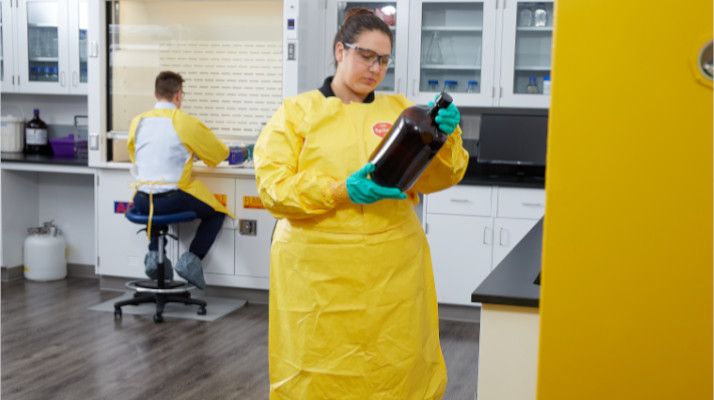
Protection from concentrated inorganic chemicals up to organic and highly concentrated chemicals as well as biological hazards.
Case Studies
Resources

A series of 1-min videos for creative demonstrations on our protective garments and gloves.
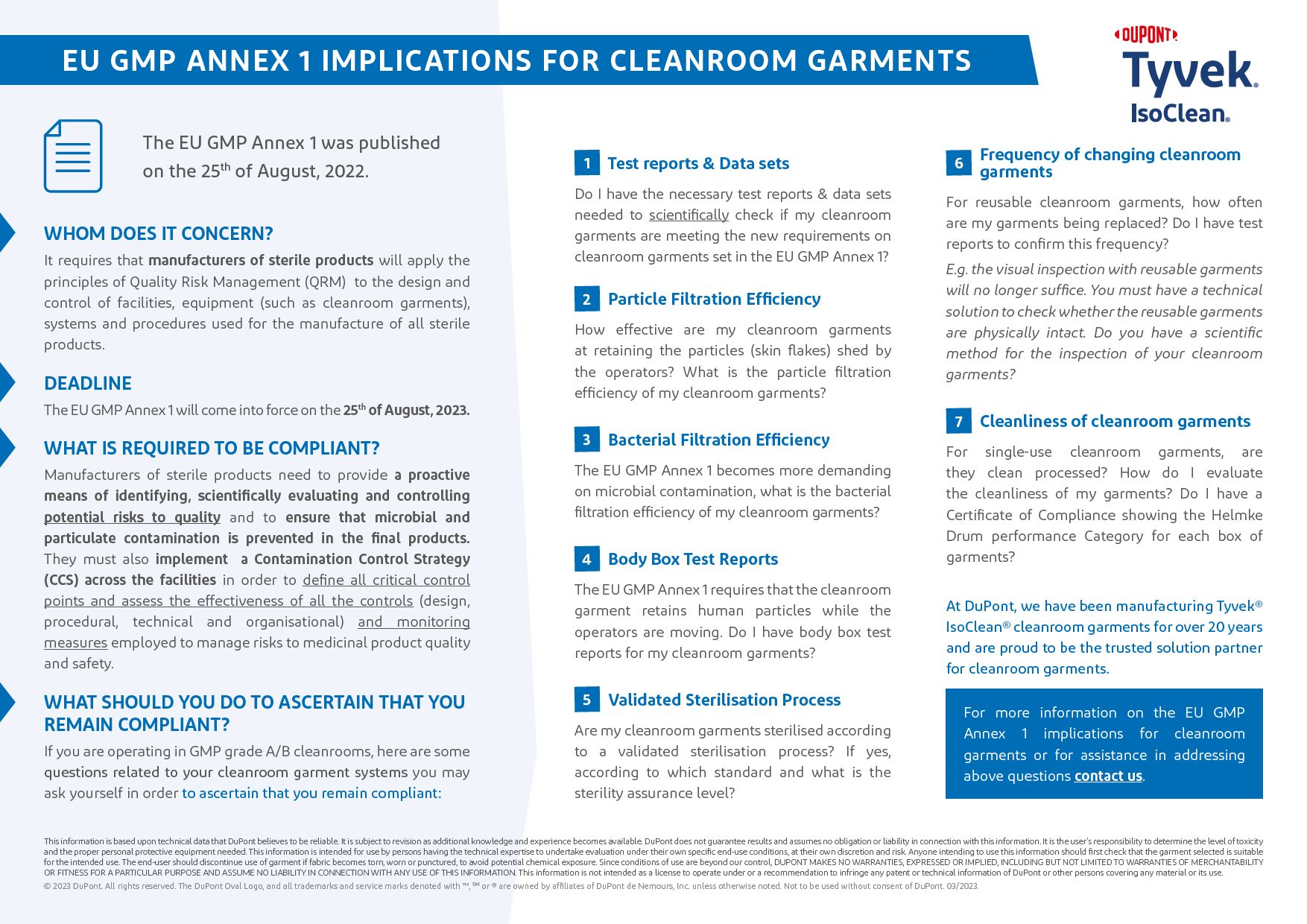
The EU GMP Annex 1 was published on the 25th of August, 2022.
It requires that manufacturers of sterile products will apply the principles of Quality Risk Management (QRM) to the design and control of facilities, equipment (such as cleanroom garments), systems and procedures used for the manufacture of all sterile products.
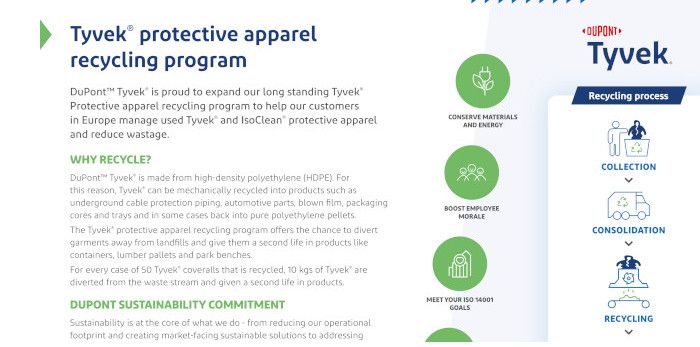
The Tyvek® protective apparel recycling program offers the chance to divert garments away from landfills and give them a second life in products like containers, lumber pallets and park benches.
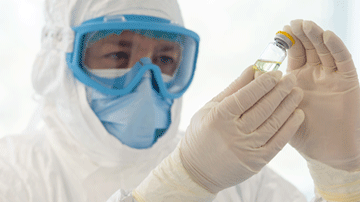
Discover the advantages of Tyvek® and Tyvek® IsoClean® garments and accessories in the manufacture of vaccines according to GMP Annex 1 guidelines.
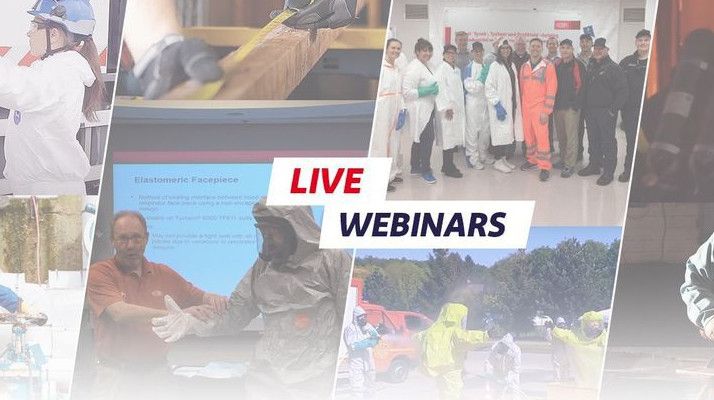
Each session will host our training managers and from time to time guest speakers, experts in the discussed fields. It will be an informative and interactive experience, which will allow you to not only gain valuable knowledge and training, but also receive a certificate of completion from DuPont Personal Protection.
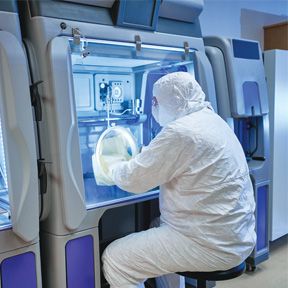
As single-use protective clothing, DuPont™ Tyvek® IsoClean®, DuPont™ Tyvek® and DuPont™ Tychem® provide a range of products that deliver superior contamination and bioburden protection for products and processes in cleanroom environments.
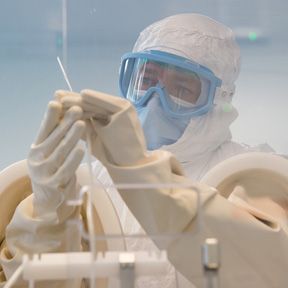
With a wide range of industry-leading personal protective equipment (PPE) solutions and a global network of PPE specialists, technical experts and manufacturing, DuPont is uniquely suited to provide the protection and comfort every worker deserves to help them face a range of workplace hazards with confidence, as well as contamination control for every product in diverse pharmaceutical environments.
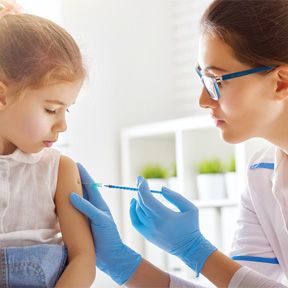
Cytostatics are used as drugs in cancer therapy (chemotherapy) to inhibit the multiplication of tumour cells and are also used increasingly to treat other diseases. However, their toxicity affects not only tumour cells but also healthy cells.
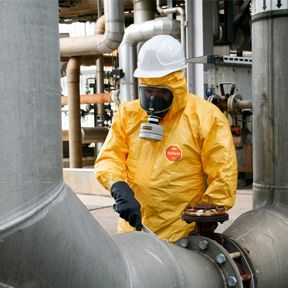
Industrial workers work with and around hazardous particles and chemical vapors and liquids every day. DuPont scientists evaluated the hazards and came up with solutions for personal protective clothing that offers durability, comfort and uncompromised protection that doesn’t wear away, as is the case with many other protective materials.
